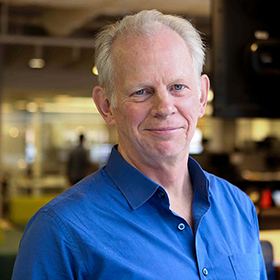A life-destroying global pandemic. Anguished demands for racial and social justice. Millions of families in financial freefall. Whiplash change across the social sector and with it, unpredictable funding flows. These cascading challenges are testing the design limits of nonprofits everywhere, often exposing a constricted capacity to bounce back and help communities build toward a better tomorrow. It’s more clear than ever that nonprofits need to possess a well-honed process for continuously building and reinforcing organizational resilience. But how?
How can nonprofits summon the creativity to pioneer new pathways to social impact, when deep crisis has shaken their fundamental approaches to achieving their goals? What can nonprofits do to navigate uncertainty, so they have a better shot at seizing new opportunities to extend their reach—opportunities that the pandemic itself has revealed? And what does it look like when nonprofits are capable of continual, trauma-free renewal, even in the absence of a crisis?
Such questions were top-of-mind in the summer of 2020, as the US surpassed 3 million Covid-19 infections and cries for racial justice persisted in cities across the country, after police officers fatally shot Breonna Taylor in March and choked George Floyd to death in May. That summer, The Bridgespan Group and the Emerson Collective embarked on a year-long effort to support 48 nonprofits in the Emerson Collective’s portfolio as they fortified their organizational resilience.
While these nonprofits operate within a variety of fields that span the social sector, each organization is working to advance racial equity and justice. And like so many other nonprofits, each plays a critical role in partnering with communities as they strive to make their way through these unprecedented times. “We have always been humbled by the strength and resilience of our partners,” said Anne Marie Burgoyne, the Emerson Collective’s director of social innovation. “But as 2020 unfolded and leaders and teams were challenged on so many fronts—financial, operational and relational—we sought to create an opportunity to build skills and tools to enable organizations to grow even stronger.”
As we work and learn alongside these nonprofits, we are reminded that resilience—the capacity to not only navigate difficult challenges or traumatic events, but also improve along the way—resides within each of us. Citing research as well as such examples as the run-to-the-fire response of multitudes of Americans to the 9/11 terrorist attacks, the American Psychological Association asserts that “resilience is ordinary, not extraordinary.” All people experience trauma, pain, and stress in their lives and yet, all of us have the capacity to grow our inner resilience over time.
So it goes with organizations. All organizations, especially social sector nonprofits, likely endure the kind of adversity that sometimes shakes them to their foundations; all have the potential to withstand and learn from those difficult events. So it behooves nonprofits to make the practice of building organizational resilience an everyday habit, so they not only survive the current crisis, but also emerge from it stronger and better poised to meet the needs of the communities they serve.
Three Strategies for Building Nonprofit Resilience
In this three-part series, we draw on the experiences of a variety of nonprofits and their leaders—many of whom have sacrificed and struggled in their personal as well as professional lives—to explore three core strategies for building resilience and ensuring that it persists. Even though we spotlight nonprofits that largely operate within the United States, the lessons and insights that follow are universal. Any nonprofit anywhere can apply them.
- They think long and short: Resilient organizations craft and maintain an inspiring vision for a 10-year future, even as they create a roadmap for navigating their next 18 months, so that difficult, sudden events don’t deter them from achieving long-term, outsized goals. (Read "To Combat Adversity, Resilient Nonprofits Think Long and Short.")
- They tap into their super power: They identify, marshal, and deploy the unique assets and capabilities that make them distinctly impactful in the communities they serve. (Read "In a Crisis, Resilient Nonprofits Tap into Their Superpower.")
- They know that even in a crisis, there are opportunities to accomplish more: They get clear-eyed about the risks they might encounter. At the same time, they experiment relentlessly and elevate what works. By generating an exciting array of strategic options, they just might be nimble enough to seize emerging opportunities in a fast-changing world. (Read "For Resilient Nonprofits, There Is Opportunity in Adversity.")
Every disappointment and loss holds the possibility of new beginnings. As Frederick Douglass put it, “If there is no struggle, there is no progress.” And yet, it’s not simply grit and persistence that enables people and teams to bounce back from setbacks smarter and stronger. In “How to Build a More Resilient Team,” author and consultant Gustavo Razetti argues there’s another factor: the capacity to reframe difficult challenges as opportunities for new ways of seeing and learning. Even in the depths of deep suffering, there is always the possibility to overcome—and we must seek out hard-won insights and strategies to do so.
Meera Chary, a partner in Bridgespan's San Francisco office, co-leads (with Bridgespan Partner Preeta Nayak and Bridgespan Principal Colleen Brosman) the Nonprofit Resiliency Initiative, in collaboration with the Emerson Collective. Bridgespan Editorial Director Bill Breen is based in Boston.



